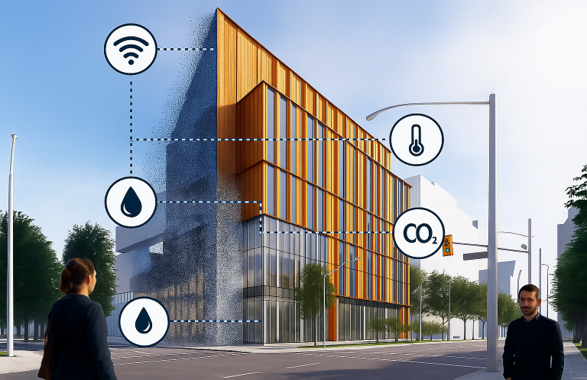


Challenge
Large-scale construction projects like Limberlost Place face constant pressure to maintain schedule, control costs, and ensure quality—all while coordinating multiple trades and stakeholders. Traditionally, progress tracking and issue detection relied on manual inspections, static reports, and limited visual tools. These methods are time-consuming, prone to human error, and often identify problems too late to avoid costly rework or delays.
Overcoming the Problem
The project team—PCL Construction, George Brown College, and Get-Tech Innovative Solutions—overcame these limitations by piloting an integrated Digital Twin approach in Flair3D. By combining laser scanning, coordinated BIM models, project schedules, and IoT sensor data, the team created a real-time, interactive 3D platform for progress monitoring, quality verification, and faster, more accurate schedule updates.
Weekly scans were aligned with the BIM model to detect discrepancies early, while IoT sensors tracked conditions like moisture and leaks in real time. Automated integration with the 4D schedule enabled progress updates in hours instead of days—instantly available online for all team members and visualized in 3D simulations that added the spatial dimension to time data. This gave stakeholders a powerful, holistic view of project status, enabling earlier interventions and reducing the risk of delays.
In parallel, the collaboration provided George Brown students with direct, hands-on involvement in advanced construction technology—turning a technical challenge into both a process improvement and an experiential learning opportunity.
